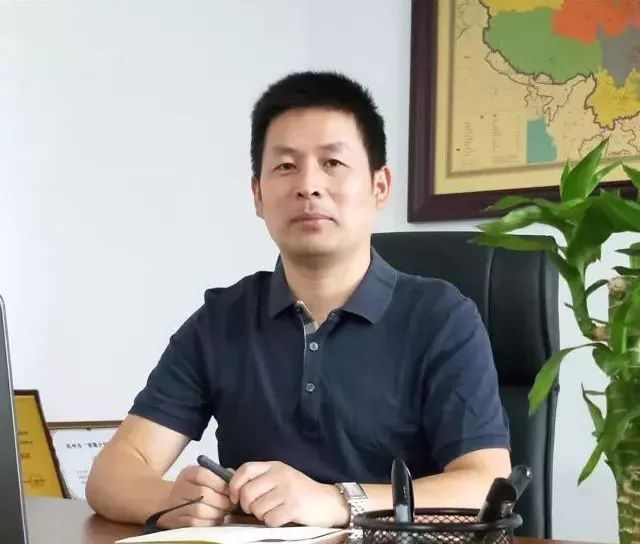Wang Jianhua: Charging facilities and electric cars walk on two legs, and both must be hard
Since the establishment of the Expert Committee of Zhejiang New Energy Automobile Industry Alliance in October 2016, it has been widely concerned by people in the industry, and has also received demands from many member units for expert guidance or cooperation. We will conduct an exclusive interview with each expert. The guest of this interview is Wang Jianhua of Hangzhou State-controlled Power Technology Co., Ltd..
Xiao Bian: Hello, Mr. Wang. At present, with the support of national policies, including the general upgrade of consumers' consumption concept, China's new energy automobile industry has developed rapidly. What do you think of China's new energy automobile industry, what challenges are faced with and what opportunities exist?
Mr. Wang: From a policy perspective, the promotion of new energy vehicles is related to energy security, environmental protection and industrial upgrading. Therefore, the state's support for the industry can be described with no effort; From the consumer's point of view, new energy vehicles (electric vehicles) are already a very suitable product for public travel without considering the current cost of using power batteries and the convenience of charging. Automobile has been transformed from fuel vehicle to electric vehicle, and its product has been upgraded from a vehicle to an electronic product, which is a qualitative leap in speed, safety and driving experience. In the near future, with the commercialization of 5G network, the time delay and breakpoints of wireless signals will be eliminated, and unmanned driving will become a reality, and electric vehicles will definitely replace traditional fuel vehicles. Under such a general direction, China's new energy automobile industry has a bright future and a bright future. Electric vehicles are a corner overtaking project for traditional automobile powers in China's automobile industry. There is not much difference in technology, and we have the largest automobile consumption market in the world. The so-called challenge mainly comes from inside, mainly because the maturity of products needs to be improved.
Xiaobian: Zhejiang is also at the forefront of the country in the development of new energy automobile industry. How do you view the development of new energy automobile industry in Zhejiang Province?
Mr. Wang: Zhejiang's new energy automobile industry includes vehicle production, spare parts, charging facilities production, car leasing, charging facilities operation, etc. No matter which aspect, we are at the forefront of the country, which is mainly due to the high activity of private economy in our province. The atmosphere of innovation is good, and there is also a high activity of investment market. Basically, the best in the industry are chased by capital. Driven by technology and capital, the new energy automobile industry in our province is in full bloom. I believe that with the further improvement of charging network, it belongs to new energy
Xiaobian: With the rapid development of new energy vehicles, related industries in the upstream and downstream of the industrial chain have also developed rapidly, including charging piles, which is an opportunity brought by industrial development. However, we also found that in fact, many charging piles equipped in cities will face the problem of aging or unusable. As an industry expert, how do you view this problem?
Mr. Wang: Charging facilities and electric vehicles are the two legs of the new energy vehicle strategy. If there is a pile without a car or a car without a pile, the industry will become a cripple, and it will definitely not walk far. At present, the National Development and Reform Commission vigorously promotes the construction of charging facilities in various provinces, hoping to lay a foundation for the promotion of electric vehicles. At present, there are three main reasons for the low utilization rate of charging piles in many places, or they cannot be used: First, the number of electric vehicles is still not high; Second, the national standard for charging electric vehicles was implemented on January 1, 2017. This standard needs to be implemented jointly by car companies and pile enterprises, but the charging standards on the current market are still not uniform, resulting in mismatch between pile cars; Third, some charging pile enterprises pay more attention to construction than operation and maintenance in order to obtain state and local subsidies. I believe that with the development of the industry and the improvement of supervision, this problem will be properly solved.
Xiaobian: Nowadays, many ordinary consumers buy new energy vehicles, and the charging problem is also their concern. To solve these concerns of consumers, what do you think we should do as related enterprises in the industrial chain?
Mr. Wang: The charging facilities of electric vehicles mainly include private electric piles and public electric piles. Private electric piles are generally used at home, which are limited by power load and are all low-power AC piles with long charging time; Public charging piles are all DC piles, which are invested by the operating company. They charge quickly but charge a certain service fee. Consumers are mainly worried about the convenience and perfection of charging network and the cost. These problems need the joint efforts of the government and enterprises. The government should give green light to electric pile enterprises in the aspects of site approval, power consumption approval and subsidy (including electricity subsidy). Enterprises should have a long-term investment mentality, make a fuss about product quality and service, do not pursue immediate interests unilaterally, and do not have a quick and quick attitude. Sowing and harvesting are not in the same season.
Xiaobian: In the middle of last year, State-controlled Power pioneered the charging pile for UnionPay card consumption, which should also be in a leading position in the industry. So, what are the advantages of State-controlled Power in the promotion of new energy automobile industry, including the development of charging pile field? Next, what new technologies will be popularized?
Mr. Wang: State-controlled Power has a certain leading position in the field of charging pile technology. The company is one of the only enterprises in China that has the production and export capacity of European and American standard charging products. The technology of the company is also leading in the field of payment, which has been praised by national media for many times. The purpose of jointly developing "charging pile with bank card payment" with UnionPay is to solve the problem that some foreign drivers who do not have WeChat and Alipay accounts pay when charging, and it is a supplement to charging payment means. At present, the company's new technology development direction includes: the design and production of charging facilities and charging detection facilities in Europe and America, and the profit of exporting to Europe and America is relatively high for enterprises. In addition, we have more cooperation with Tower Company and local government on multifunctional piles. Generally speaking, many functions such as "5G base station building", "roadside meter charging" and "municipal facilities management" can be realized on one charging pile.
Xiaobian: Next, the Alliance will provide professional training for member enterprises through expert committees. What knowledge do you think is urgently needed by state-controlled power or enterprises of the same type in the field of new energy vehicles, including charging piles?
Mr. Wang: As far as the charging pile field is concerned, enterprises are concerned about the new technology, development direction and the promotion and discussion of standards. In addition, upstream and downstream communication in the industry is also essential. In real life, the owner's car cannot be charged on the charging pile, which may be the problem of charging pile, but it is more likely to be the problem of BMS. Communication will promote the common progress and development of enterprises in the industry.
Xiaobian: Finally, I would like to ask Mr. Wang, what is your life motto in your work and life?
Mr. Wang: Diligence can make up for one's difficulties. Compared with the degree of development and utilization of human brain, the gap between people can even be ignored. I hope that through my continuous efforts and study, I can realize those dreams, and I hope that my hard experience and results can infect and inspire people around me.
Expert introduction
Wang Jianhua, dual master of software engineering and management, co-founder and general manager of Hangzhou Guokong Power Technology Co., Ltd. He is currently a director of China Electric Vehicle Charging Technology and Industry Alliance, and was named as "Outstanding (New) Person in China's Charging Facilities Industry in 2017" by the Alliance. It was awarded "2017 New Zhejiang Business Entrepreneurship Award" by qianjiang evening news and Zhejiang Industry-University-Research Promotion Association.
In 2013, Hangzhou Guokong Electric Power Technology Co., Ltd. was co-founded. In just a few years, the company stood out in the fields of financial payment technology, automotive microelectronics system development, charging pile development of electric vehicles, etc. It is only a few enterprises in China that have mastered the charging equipment technology of European and American standards for electric vehicles, and has been reported by well-known domestic media such as People's Daily Online, Xinhua Online and China Online.
He has long been engaged in the research and development of artificial intelligence, embedded systems and electric vehicle charging equipment, and has won the Bronze Award and Excellence Award of Beijing Invention and Innovation Award; Shanghai Excellent Invention Award Silver Award and Bronze Award; In industrial design, he has won the Design Award of the National Patent Office. Has more than 20 national patents. He was hired as a researcher in Automotive Microelectronics Joint Laboratory of Chinese Academy of Sciences.
LATEST NEWS
- Welcome a delegation from Huai 'an Economic Development Zone to visit our company 2020-11-24 17:05:57
- Wang Jianhua: Charging facilities and electric cars walk on two legs, and both must be hard 2020-11-24 17:03:37
- New Prospect of Charging Pile-Birth of Industry Standard of Wireless Charging Technology 2020-11-24 16:53:01
- State-controlled Power won the industry honor again, and 2018 is on the road! 2020-11-24 16:46:28
- Charging pile manufacturers remind users how to use electric vehicles safely in high temperature weather 2020-11-24 16:31:14
- The Combination of Charging Pile and Power Battery in the Future-A Record of Zhejiang New Energy Automobile Industry Alliance Secretariat Visiting State-controlled Power 2020-11-24 16:30:06


Hangzhou guokong electric power technology co., ltd Service hotline: 0571-81969856 / 0571-87973887Company address: 3/F, Building 1, Qianjiang Pentium Science and Technology Park, No.16 Xiyuan First Road, Xihu District, Hangzhou


